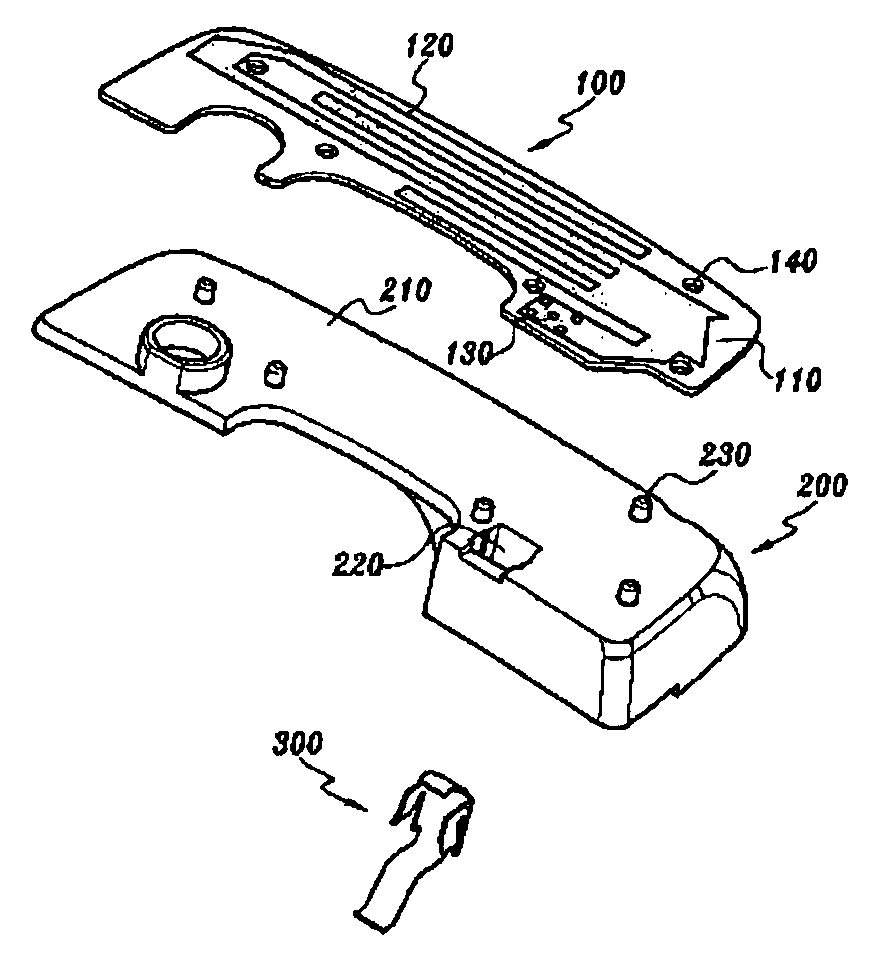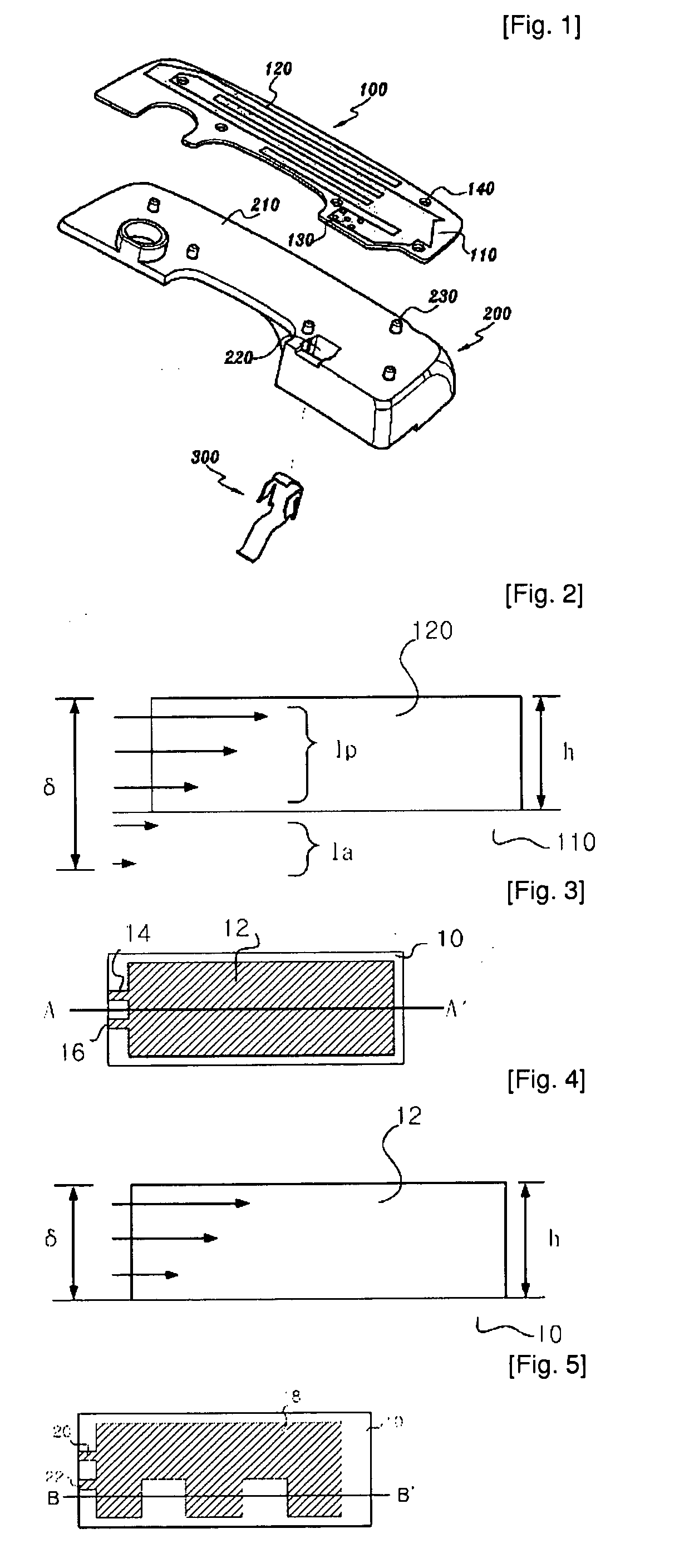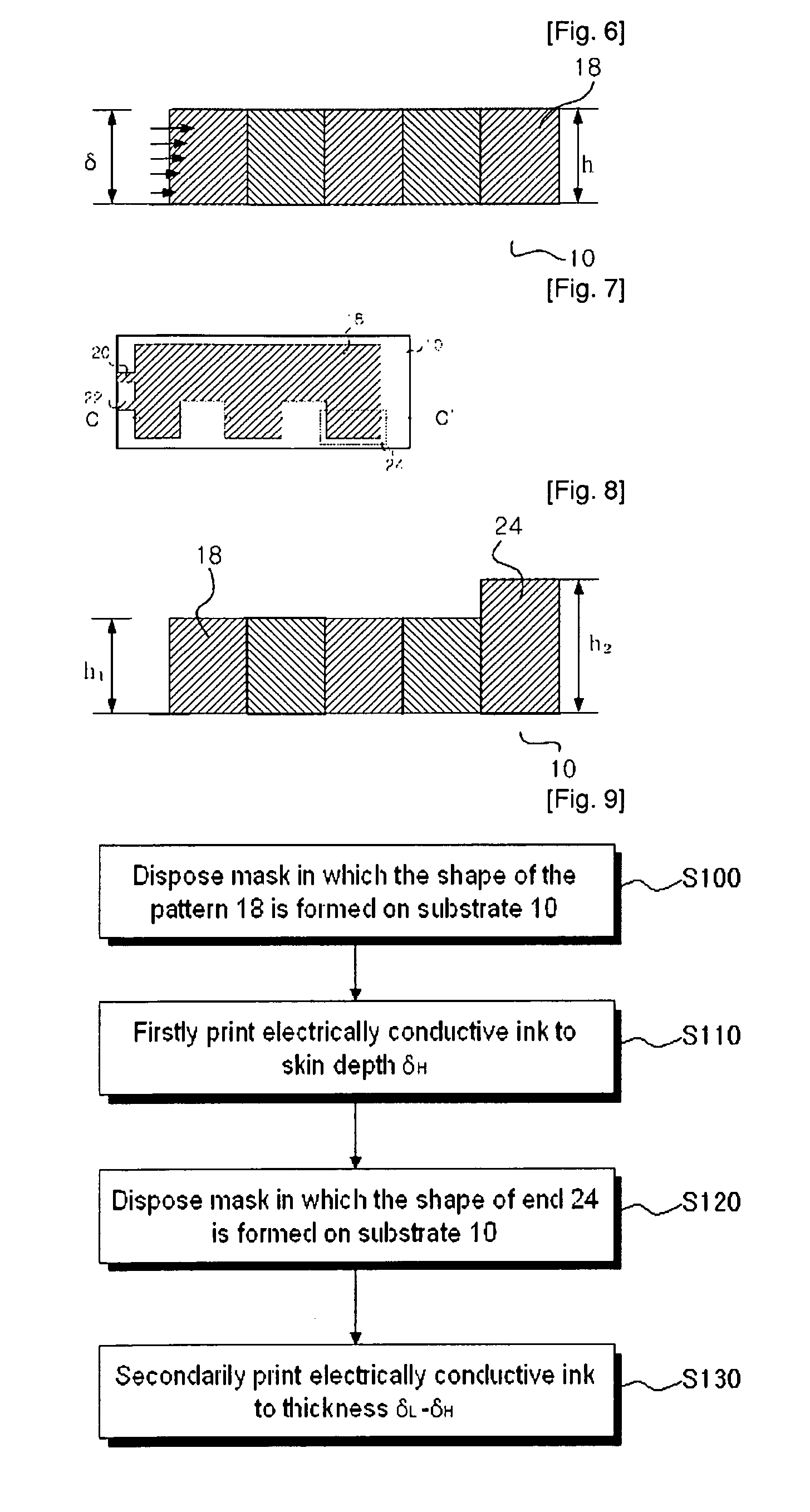Antenna using electrically conductive ink and production method thereof
- Summary
- Abstract
- Description
- Claims
- Application Information
AI Technical Summary
Benefits of technology
Problems solved by technology
Method used
Image
Examples
first embodiment
[0049]FIG. 3 is a top view of a single band antenna according to the present invention, and FIG. 4 is a cross-sectional view of the antenna taken along line A-A′ in FIG. 3. Referring to FIG. 3, the antenna of the present embodiment includes an antenna radiator 12 formed of electrically conductive ink on the substrate 10 through printing, and a ground unit 14 and a feeding unit 16 formed in the antenna radiator 12. The electrically conductive ink used to form the antenna radiator 12 may be known one, but preferably a mixture of 65 to 70% by weight of silver (Ag) and 30 to 35% by weight of an additive. The additive may be a mixture of resin, a drying agent, and a dispersing agent. The resin serves to prevent a direct contact between silver (Ag) and oxygen in order to prevent corrosion. The drying agent serves to accelerate the dry of ink, reducing the manufacturing time of an antenna. The dispersing agent serves to increase the dispersibility of silver particles.
[0050]Meanwhile, in or...
second embodiment
[0052]FIG. 5 is a top view of a dual band antenna according to the present invention, and FIG. 6 is a cross-sectional view of the antenna taken along line B-B′ in FIG. 5. The antenna of the present embodiment includes an antenna radiator 18 formed by printing electrically conductive ink on a substrate 10. A ground unit 20 and a feeding unit 22 are also formed in the antenna radiator 18. The antenna radiator 18 can be formed by printing the same electrically conductive ink as that of the previous embodiment. Meanwhile, the antenna radiator 18 of the present embodiment is printed in an E shape, as shown in FIG. 5, and accordingly has a dual band characteristic. However, those having skilled in the art will easily understand that the shape of the radiator 18 is not limited to the E shape, but may have a variety of shapes, such as a meander type, a rectangular type, a triangular shape, and a circular shape, depending on a frequency band of an antenna and a multi-band characteristic.
[005...
third embodiment
[0058]FIG. 7 is a top view of a dual band antenna according to the present invention, and FIG. 8 is a cross-sectional view of the antenna taken along line C-C′ in FIG. 7. The antenna of the present embodiment includes an antenna radiator 18 formed by printing electrically conductive ink on a substrate 10. A ground unit 20 and a feeding unit 22 are also formed in the antenna radiator 18. The antenna radiator 18 can be formed by printing the same electrically conductive ink as that of the previous embodiment. The antenna radiator 18 of the present embodiment is printed in an E shape, and accordingly has a dual band characteristic. However, those having skilled in the art will easily understand that the shape of the radiator 18 is not limited to the E shape, but may have a variety of shapes, such as a meander type, a rectangular type, a triangular shape, and a circular shape, depending on a frequency band of an antenna and a multi-band characteristic.
[0059]In general, the dual band ant...
PUM
 Login to View More
Login to View More Abstract
Description
Claims
Application Information
 Login to View More
Login to View More - R&D
- Intellectual Property
- Life Sciences
- Materials
- Tech Scout
- Unparalleled Data Quality
- Higher Quality Content
- 60% Fewer Hallucinations
Browse by: Latest US Patents, China's latest patents, Technical Efficacy Thesaurus, Application Domain, Technology Topic, Popular Technical Reports.
© 2025 PatSnap. All rights reserved.Legal|Privacy policy|Modern Slavery Act Transparency Statement|Sitemap|About US| Contact US: help@patsnap.com



